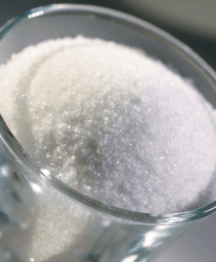Whether you are new to the winemaking hobby or looking to supplement your grape winemaking during the off-season, making wine from a kit results in great tasting wine in less time and with less work. Two experts from the largest kit manufacturers share what beginners need to know to make their kit wines shine.
Gail Tufford, Technical Services Coordinator for Global Vintners Inc.

Kits offer home winemakers the opportunity to craft high-quality wine made from juices sourced from around the globe. They offer varietals that are usually not accessible to home winemakers and you can make your wine when it’s convenient for you.
Your finished wine will be perfectly balanced without needing testing or tricky adjustments. The stabilizing and clearing agents are included in the kit. With basic winemaking equipment, you only need to follow the instructions to make your own delicious wine. It’s also a great way to stock a wine cellar at a reasonable price. Of course, another benefit to kit winemaking is that they are fun to make! I can’t think of a more delicious hobby.
If you are new to winemaking, I would recommend starting with your favorite white, blush, red, or fruit wine; they’re all about the same level of difficulty. If you are fond of Italian Nebbiolo, then make that your first batch. There are various brand levels and lots of wine styles to choose from at each level. Hold-off on making kits that contain grape skins or require a chaptalization step. Once you’ve made a batch or two, try a red with grape skins or a dessert wine. These kits use the same basic process but have a few more steps and can be a little more complicated.
The big mistake some novice winemakers make is not with the choice of wine kit, it’s all about cleaning and sanitizing your equipment. This is a crucial step. If you clean and sanitize all equipment and bottles, and follow the instructions, you will have delicious wine!
All of our kits are fantastic — there is no “better” or “worse.” It’s just like going to the liquor store and choosing a bottle of wine. There are very nice, reasonably priced wines and amazing, higher-priced ones. More expensive kits contain juice from a specific country of origin and often from specific regions. High-end kits can also contain grape skins in reds and interesting
oak combinations.
Questions come up regarding straying from the manufacturer’s directions. We want you to love your wine as much as we do. That’s why our winemaking team puts so much thought into each step of the winemaking process. Some seasoned winemakers like to tweak their wine, but they are experienced and have made wine by following the instructions for years before customizing their wine kits.
How long kit wines should be aged is always a tough question. I love chatting with home winemakers and some of them cellar wine for a few years or more. We recommend drinking reds within eighteen months and whites within one year. Taste your wine on bottling day, many of our wines are ready to enjoy right away. However, cellaring wine depends on a few things: What type of cork did you use? Was extra sulfite added before bottling? Where will the wine be stored? Cellaring techniques and conditions are a big variable when determining how long wine can be kept.
If you’re new to kits and still have questions after reading the instructions, give me a call or email me.
Rachel Lonerganis, Research & Development Specialist at RJS Craft Winemaking

Crafting wine from a kit is a great way to start learning how to make wine. Wine kits are more convenient, as they contain all the required processing aids and additives (stabilizing agents, fining agents, oaks, etc.) that have been pre-weighed for the customer. This saves you from having to go out and buy these things yourself. In addition, wine kits are reliable in terms of quality. The recipes have been tested and trialed to ensure a great product. Using fresh grapes to make wine can be trickier, especially if you are newbie, so there is overall a greater chance for problems to occur.
If you are a novice winemaker and want a wine that is lighter bodied
and easy-drinking, I would start with a kit that has a low to mid-tier price point. You may also want to try making a few different varietals to figure out what you like. Once you have tested the waters a bit, I would recommend making a higher price point kit. These kits often produce wines that are more complex. For example, many of the higher-tier kits contain a greater variety of oak alternatives, specialized yeasts, and/or grape skins, which all contribute to the flavor of the wine.
I will stress that the overall winemaking process specified in the instructions should always be followed to prevent any issues or complications with your wine. However, once you are familiar with the winemaking process, there are some opportunities where people can add their own personal touches. Some examples include:
• Blending — Try making a few different wines and then create your own blend!
• Adjusting residual sugar levels — You could do some bench trials with sugar to adjust the sweetness to your preference. Make sure to do this after fermentation is complete, and before the fining agents are added.
• Experimenting with oak — There are many different types and toast levels of oak out there. Try experimenting with different oaks to personalize the flavor of your wine.







